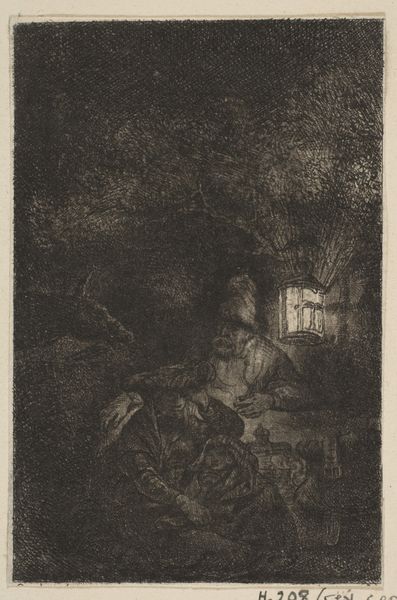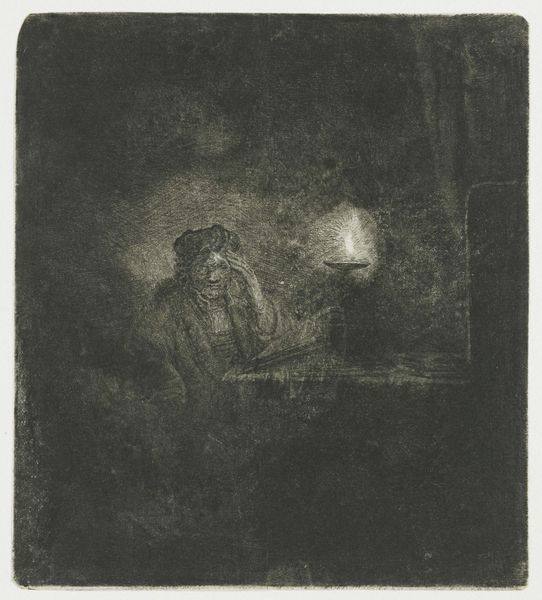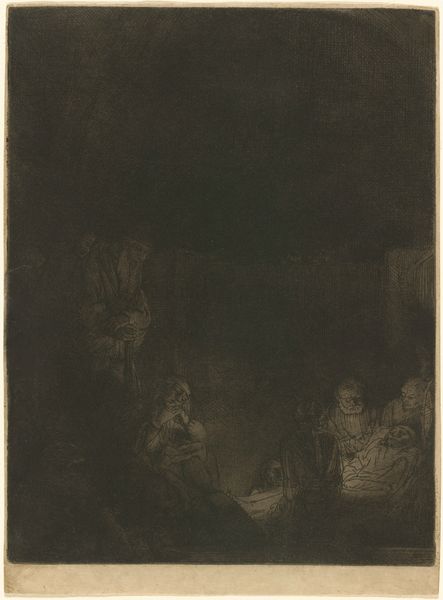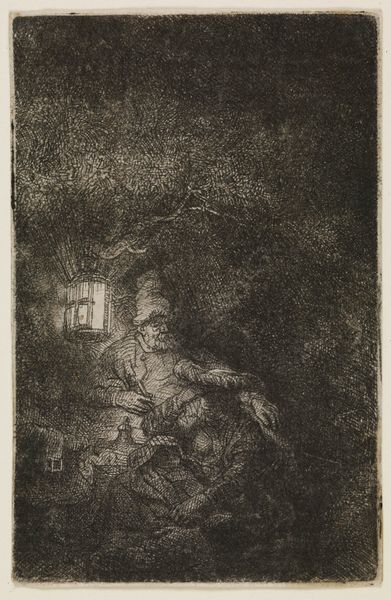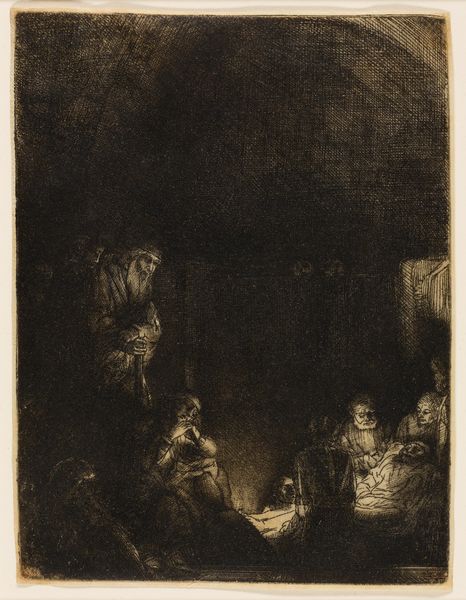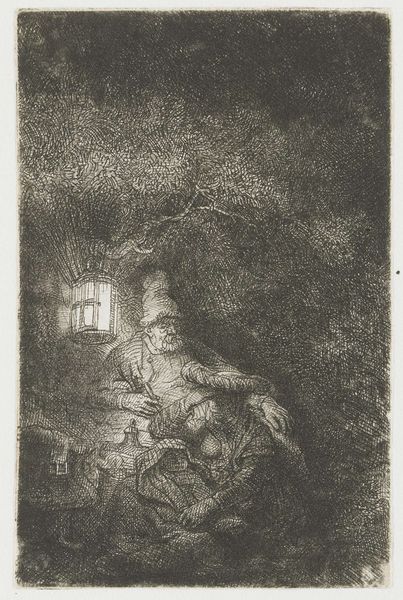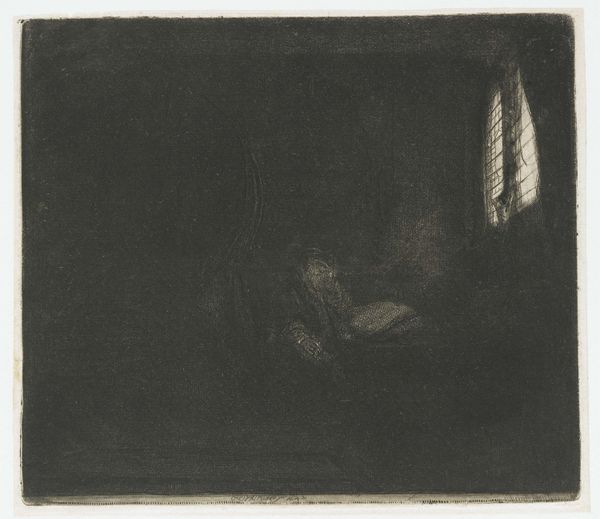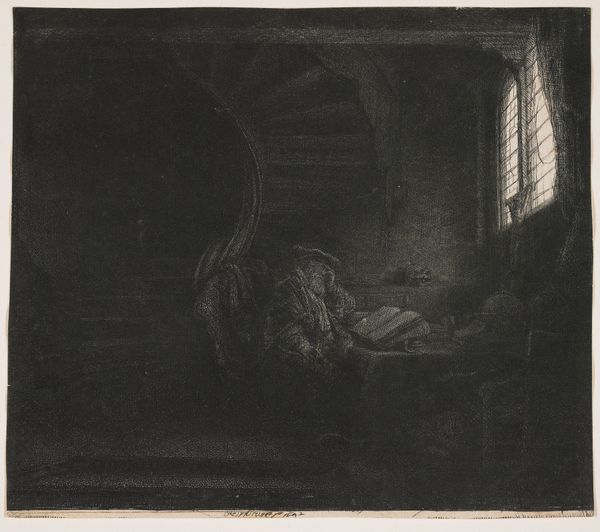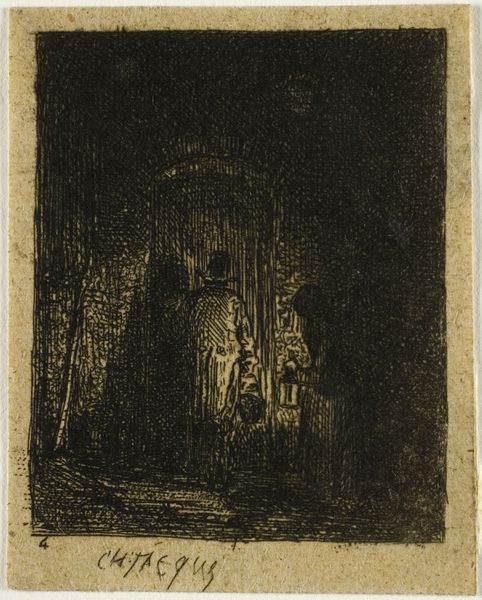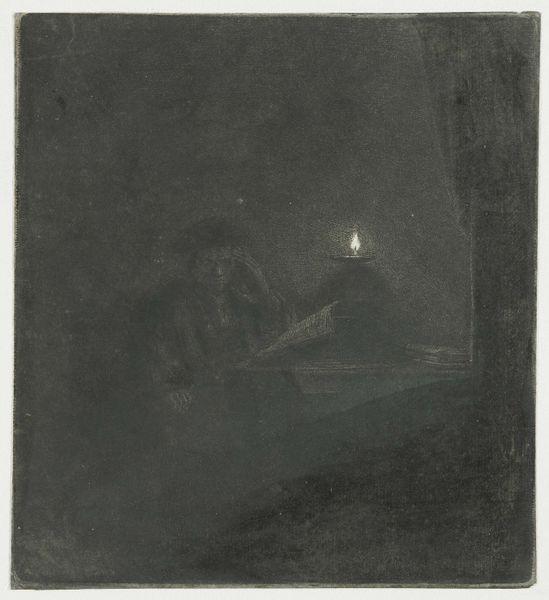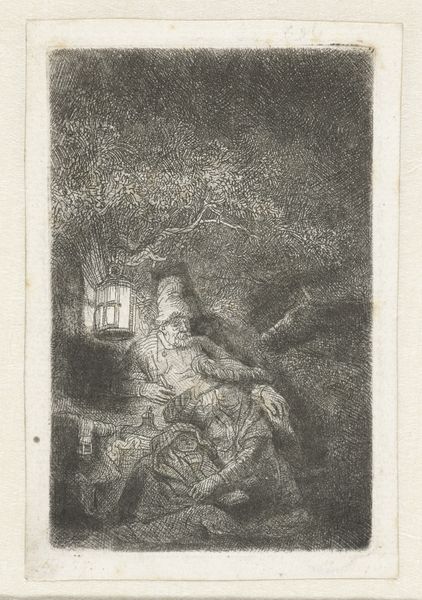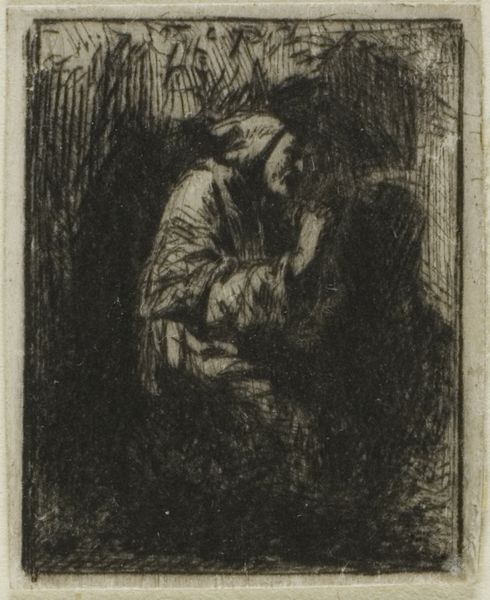
drawing, print, etching, paper, charcoal
#
portrait
#
drawing
#
narrative-art
# print
#
etching
#
charcoal drawing
#
paper
#
charcoal art
#
romanticism
#
genre-painting
#
charcoal
#
history-painting
#
charcoal
Dimensions: 68 × 54 mm (image); 75 × 58 mm (sheet)
Copyright: Public Domain
Editor: This is Charles Jacque’s "Monk at Prayer," an etching and charcoal drawing from 1843, currently at the Art Institute of Chicago. It feels very intimate, the monk hunched over in the dim light. What strikes you most about this work? Curator: Well, I’m drawn to the materiality of it. Consider the paper itself – the tooth of it, the way it accepts the charcoal and the etching ink. Jacque wasn't simply depicting a scene; he was engaging in a physical process. How does the quality of the line, the visible labor of its making, contribute to the mood you sensed? Editor: I guess it does add to that feeling of intimacy. It's not a grand painting; it feels very hand-made, almost fragile. You can really see the mark of the artist, how much detail they can get with these materials. Curator: Exactly. The “preciousness” associated with painting is absent here, and think about where an etching like this might have been displayed. Was it meant for a wealthy collector's wall, or did its reproductive capabilities allow for a wider, perhaps even middle-class, audience? And how does the choice of a humble material like charcoal affect our perception of the monk himself? Editor: That's a great point! Seeing it as reproducible and meant for a wider audience definitely changes how I see it. I had been thinking about it in this romantic context of a solitary monk in prayer, but its materiality allows the picture of the monk to exist on many different walls in different households. Curator: Yes, it bridges the gap between the spiritual subject matter and everyday life. What initially appeared as a romantic scene is actually engaged in the culture and labour of the time. Editor: That’s fascinating. I never considered the printmaking aspect changing the artwork’s reception, so I’ll try to keep it in mind next time. Thanks! Curator: A vital lesson. The how is as important as the what.
Comments
No comments
Be the first to comment and join the conversation on the ultimate creative platform.
